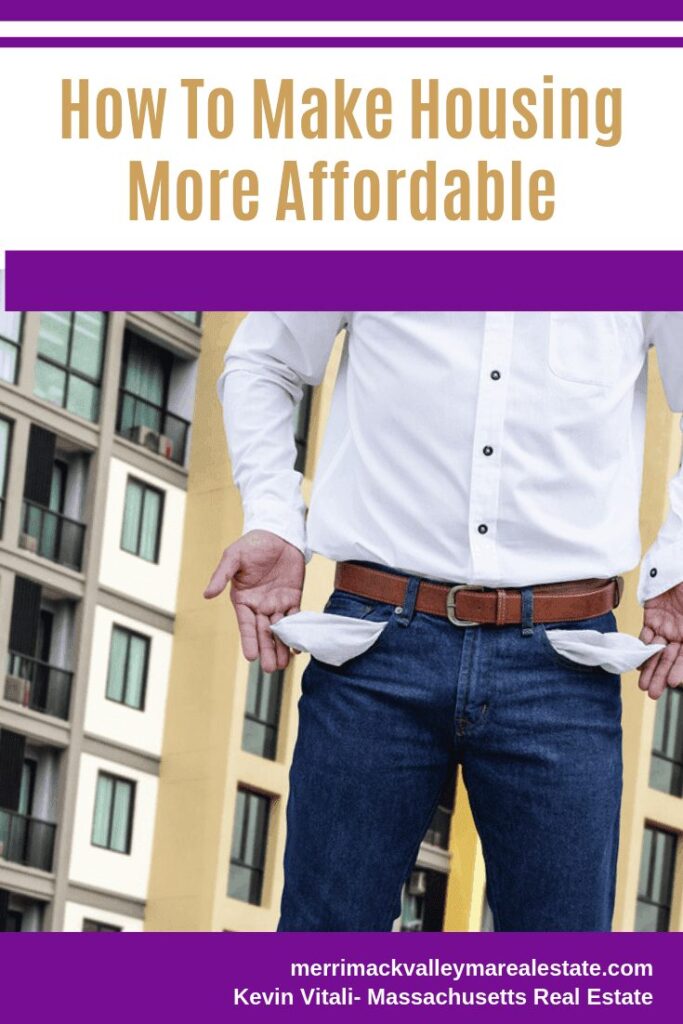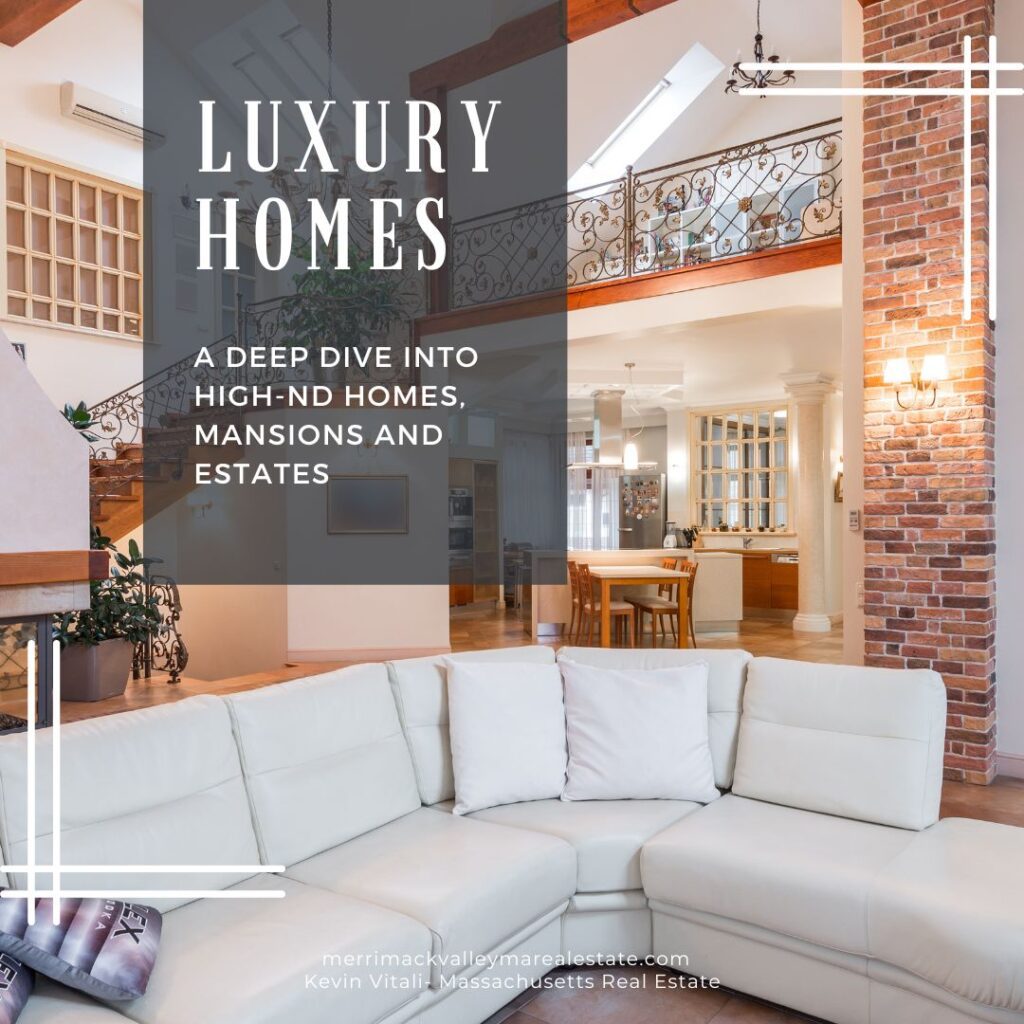 Shelter is a basic need. We all need a place to live.
Shelter is a basic need. We all need a place to live.
In the greater Boston area and other large urban areas across the county we are seeing a shortage of affordable housing. I am not talking about housing that is subsidized, just housing that is affordable to the everyday family.
In the first quarter of 2009 until the first quarter of 2019 we have seen home prices rise significantly.
| County | Median Price 2019 | Median Price 2009 | % Increase |
| Essex | $280,000 | $440,000 | 57% |
| Middlesex | $340,000 | $540,000 | 58% |
| Suffolk | $240,000 | $549,000 | 128% |
Since 2009 we have seen a substantial 57% increase to a whopping 128% increase. These types of housing increases are unsustainable. Housing has traditionally risen with inflation and cost of living at a modest 1.5 to 3% increase per year.
Has your income risen 60% to 120% in the last ten years? For most people I would say no.
Furthermore it is predicted we need an additional 4.6 million units by the year 2030.
Define Affordable Housing In Massachusetts
The federal government has given a guideline of housing costs being no more than 28% of a families income. Yet we see many homeowners and renters spending 40-50% of their gross income to have shelter.
Boston’s median family income was almost $108,000 in 2017.
Using the government’s formula of no more than 28% of your gross income going towards housing leaves a monthly mortgage or rental payment of around $2500 a month.
If you transfer this payment into owning a home would make a $360,000 home as affordable under the governments guidelines.
Yet any new construction coming on board, is much higher than that.
What Should An Affordable House Look Like In Massachusetts?
Affordable housing makes people cringe. They think of subsidized housing for low income families. I really should be using the term Housing Affordability.
An affordable home should be in good condition with moderate finish between 1400-1700 square feet consisting of 3-4 bedrooms and 1.5 to 2 baths.
Is that too much to ask for in an affordable home in Massachusetts?
In many communities in greater Boston $360,000 won’t or can barely buy you a house. In other communities that $360,000 will only buy you small homes that require much work and updating.
Again, I am stressing I am not looking for affordable housing that is subsidized by the government. I am saying there should be housing affordability the average low to middle income family without stressing their finances to the max.
A quick look in a section of Massachusetts (north and north west of Boston) shows 242 new construction on the market. Out of the 242 there are 25 that are under $620K with the average new construction going for $1,208,000!
Why Is Housing Affordability Hard To Obtain in Massachusetts?
Affordable housing is hard to obtain, not only in Massachusetts, but other areas surrounding major business communities, like San Fransisco, New York City, Los Angeles, Bethseda and more…. These cities offer a cost of living 30% or more above the median, making them the most expensive cities in America.
The economy has had a major shift in the last 30 years. Several things are in play. We have become a service economy instead of a manufacturing economy. Brick and mortar store fronts are closing at alarming rates and the very best jobs are moving back to the cities.
The suburbs are not sustaining the high paying jobs. On top of it, young talent prefers an urban setting. It provides them a lifestyle and things to do after hours as well as there is public transportation where they no longer have to maintain an expensive car.
But many cities and the surrounding areas also provide the most expensive housing!
Supply and Demand Drives Affordable Housing
Supply and demand is what drives housing affordability. When there is no housing inventory both in rentals and purchases the cost of housing is driven up as people are willing to spend a greater percentage of their income just to have a place to live.
For several years in the greater Boston area we have seen rents and home prices climb at an abnormal pace as inventory dries up. There is more demand for housing than we have in inventory.
When inventories are low we see buyers getting into bidding wars and be willing to pay, in some cases, way over asking price for a home.
In the greater Boston area, given we are the oldest part of the country, the land is built up, there is not much land left to build on. With out land to easily build upon, it makes it very difficult to create new housing.
What Is the Solution To More Affordable Housing in Massachusetts?
 So what I am about to say is going to be very controversial. It is going to be divided among the haves and the have not’s.
So what I am about to say is going to be very controversial. It is going to be divided among the haves and the have not’s.
The haves are the existing home owners who want to protect their homes value by seeing huge increases in property value.
The have nots are the everyday person trying to buy their own slice of the American Dream.
The solution to making homes more affordable, at it’s core, is to provide more housing.
The problem comes with overly stringent zoning and building codes that many cities oversee. As well as land being a premium as there is very little land left to build in these areas. Stringent zoning make land even more scarce.
Because land is so scarce it is at a premium. And when you are paying upward of $500,000 for a building lot it is dictated from an economic standpoint that you need to put up an approx 1.5 million dollar home.
Many communities have made the small neighborhood developments of 2-5 houses almost cost prohibitive because of town zoning. Underground utilities, excessive minimum road widths, granite curbing sidewalks and lighting all add a significant cost to develop.
If a builder decides to build, they must build the most expensive house the community can support to recoup development costs.
The Original Intent Of Zoning Codes
Zoning codes for the most part are a byproduct of the 20th century, they were initially put in place to provide safety measures and a way for a community to maintain health standards.
Over the years they now have become a way to protect the aesthetics of a community and protect the environment. But at what cost?
The cost of the everyday person who just wants a decent place to live and raise a family. A balance needs to be achieved.
Cities and towns have a range of burdensome limits that making increasing new housing supply near impossible. Zoning laws which include lot size restrictions, strict historic preservation laws, prohibition of multi family units, maximum building sizes, maximum heights, etc… are used to prevent new housing units from being built in high-demand areas.
First and foremost in creating more affordable housing is the deregulating of burdensome zoning laws.
Not only are should we think about deregulating zoning to open up more land for building, we should also deregulate to ease the cost of rehabbing and renovating existing buildings.
With more increasing supply of inventory there will be a downward drop in pricing.
Not In My Back Yard Zoning
The Not In My Back Yard (NIMBY) zoning is exclusionary and continues to get worse. For some reason by owning a slice of land, owners believe they can control and mold the neighborhood and community beyond.
Recently, in Andover MA, a large mix used project was shot down by the community. It provided shopping, a hotel and 255 over 55 residences.
It would utilize land that was on the edge of an industrial zone on the edge on the edge of town and provide services to that part of town that were not available s they are in other parts of town.
On top of it, over 55 communities tend to bring in an affluent tax base without overloading school systems and other town services.
Residents shot down the project and cited reason like water runoff, traffic congestion, etc… as their opposition. Where in reality the project would significantly improve traffic in the areas as well as properly address all the other concerns.
On top of it, it would be the first lifestyle based community project of its kind for Andover. The project would have shops and resturaunts on site. It would also provide outdoor space with an amphitheater and an indoor atrium. All will give onsite residents as well as surrounding residents a place to stay and enjoy their community.
Other Ideas To Help Create Affordable Housing
Revamping The Commuter Infrastructure Could Create More Affordable Housing in Massachusetts
The infrastructure in around greater Boston is past it’s prime. Towns that are less than 30 miles away from Boston can have commute times of 3 hours or more at peak commuting hours.
With commute times of 3-5 hours a day it discourages workers from spreading out into more affordable outlying areas.
But what if there were commuter centers along the 495 belt with plenty of parking and high speed rails into the city that could cut commute times in almost half.
A modernized public transit system would allow more people the luxury of living farther out in much cheaper communities to commute to work in Boston in a reasonable time.
If more people are willing to live outside the congested Boston communities, pressure will be taken off the already scarce housing inventory in the city.
Give Incentive To Developers Who Bring Housing Affordability to The Table
Cities and towns need to incentivize builders to create projects with more affordable housing.
Incentives could include a streamlined approval process, density bonus, reduced parking requirements, fee waivers, and tax incentives. Project approvals and costs can be astronomical for a developer and can add significantly to the cost of each house.
You have to make a project financially beneficial for the builder to work with the town to lower the cost of the individual units while they make more money.
The point to incentives is to make it more beneficial to the builder to build a larger quality of smaller units than to build one big luxury unit.
Creative Ideas
Well, smarter people than me can figure this out but with a sharing economy coming into play, especially with the millennial generation, lets take the sharing economy into housing.
Why not have modest efficiency suites for individuals or couples built around common areas like full kitchens, media rooms, game rooms, greenhouses, study/office areas , green areas, patios, etc…
This would be an affordable solution for people on the go rarely, at home, or those starting careers spending countless hours at work, that just don’t need a whole lot of space most times.
What about towns allowing for tiny home communities?
Which by the way, made difficult by towns exclusionary zoning laws. Most towns require a minimum square footage for a dwelling. But why not have some designated areas for smaller homes with smaller lots.
Again I will leave the creative solutions to others, but I thought I would throw out a few.
Affordable Housing And Economic Development
Affordable housing in no doubt impacts the economy.
First, when building is booming it creates jobs. Building a house is labor intensive, we need man power. Never mind the supply chain behind all the materials.
The economic downturn in 2008 saw high employment rates partially caused by lack of jobs supporting the real estate segment.
Also, an economy should not rely heavily on one sector.
When housing is more affordable it gives individuals and families more discretionary income to spend elsewhere on consumables and goods, spreading money across different sectors of the economy.
Affordable cost of living also attracts talent and skilled labor. Good companies want to be where the talent is, as well.
Massachusetts has seen a decline in its growth rate of its population over the past decade, with many states gaining population at much higher rates.
Experts have sited, cost of living as a reason why young talent gets educated here in the greater Boston area, but moves out of state. This also starts to become a factor with large companies moving into the state.
One area large employers will look at, is overall cost of living for their employees. This can hinder bringing large employers with good jobs into the area.
Summary
The cost of housing in many thriving urban areas are out of control. When we see an average new construction price of $1.2 million for a large swath north of Boston, that leaves many residences who want to buy left out.
Overall, the local economy will be boosted if cities and towns would find creative ways to bring more affordable housing to their communities. More disposable income will be available to its residents to spend in it’s local economy.
Ideally, homes should appreciate in line with inflation…. more in line with about 2.6% a year. Year over year appreciation of 5%, 10% or more is unsustainable.
If you create more housing supply, the upward appreciation of homes will fall in line and will make home ownership more affordable.
Other Real Estate Resources:
- Karen Highland- Renting A Home vs Buying a Home- Which is more affordable?
- Paul Sian- What Does It Mean To Be House Poor?
- Kevin Vitali- Find The Balance Between Quality Schools and Housing Affordability
- Xavier De Buck- When Is it Right To Buy YOur First Home?
- Bill Gassett- Find the Best Mortgage Programs For First Time Home Buyers
25 Least Expensive Properties in Northern Massachusetts
This article, How To Make More Affordable Housing In Massachusetts, was provided by Kevin Vitali of EXIT Group One Real Estate. I have helped 100’s of home buyers over the years and am confident my experience and skills can make purchasing your next home a pleasant experience. Please feel free to reach me at 978-360-0422 to discuss your upcoming purchase.




